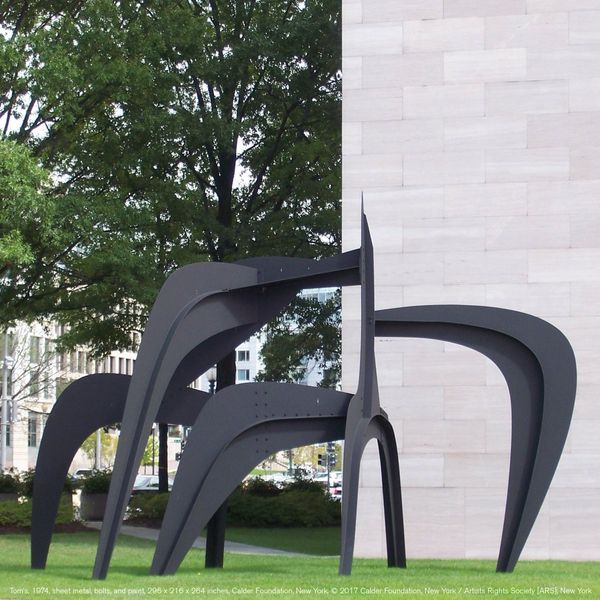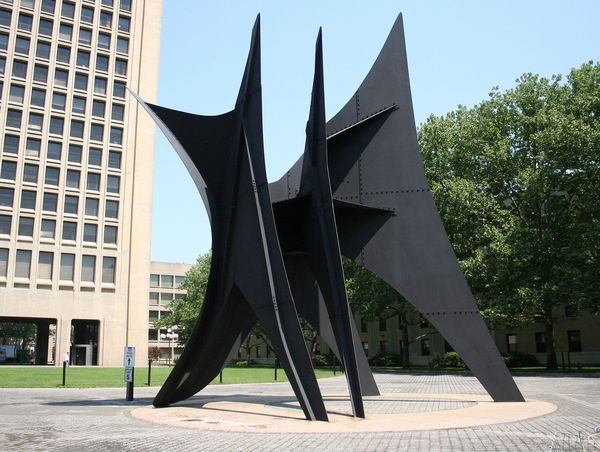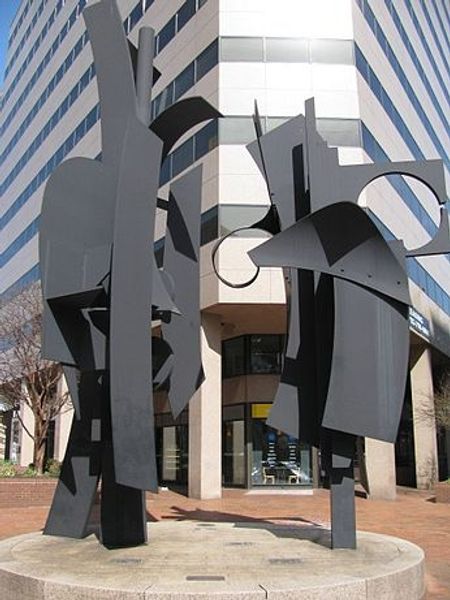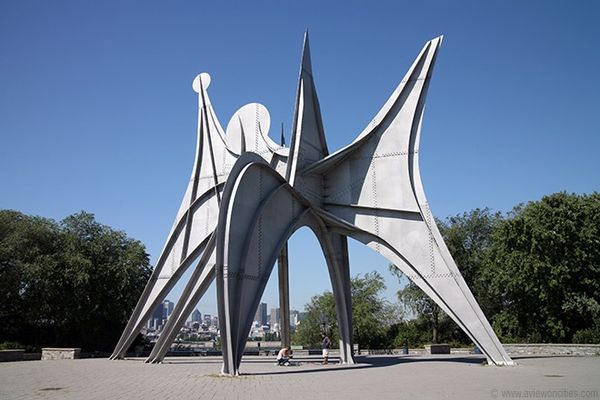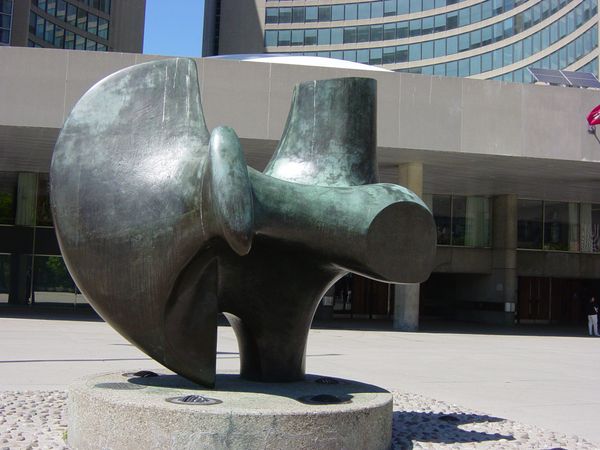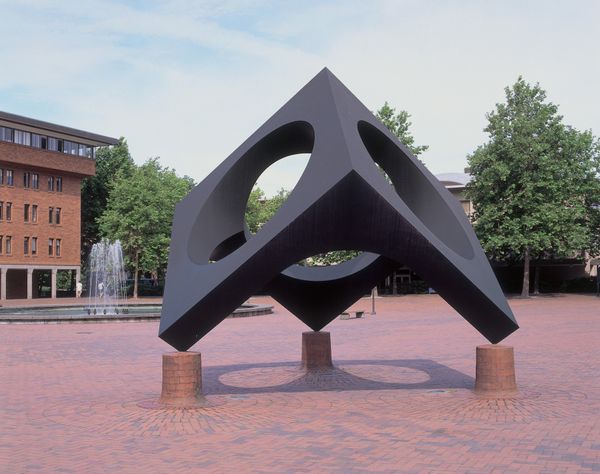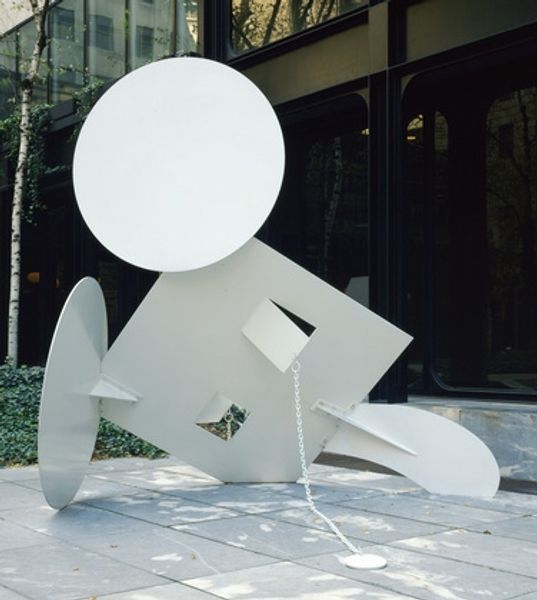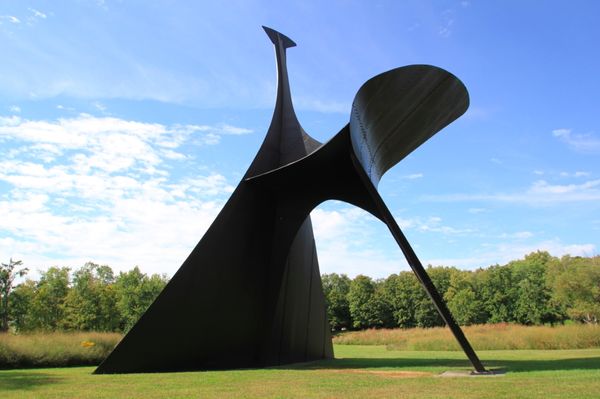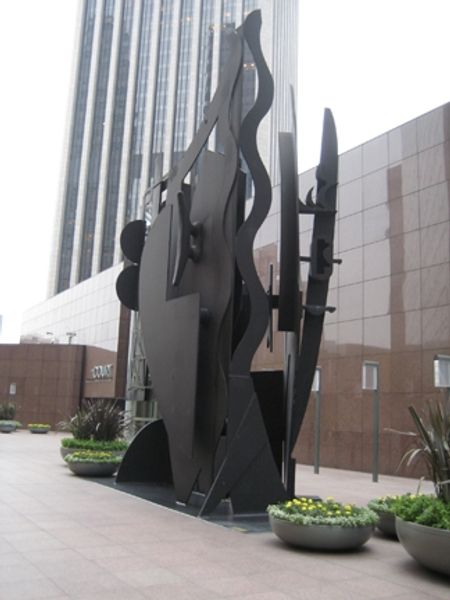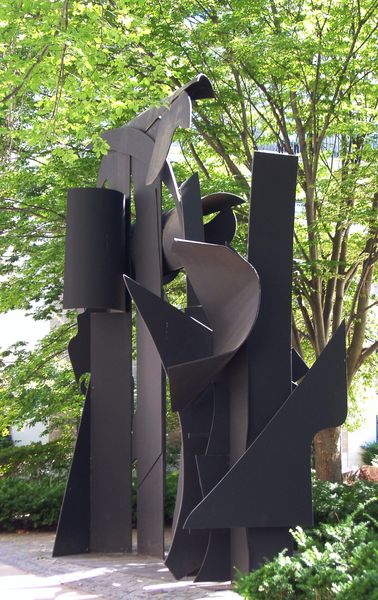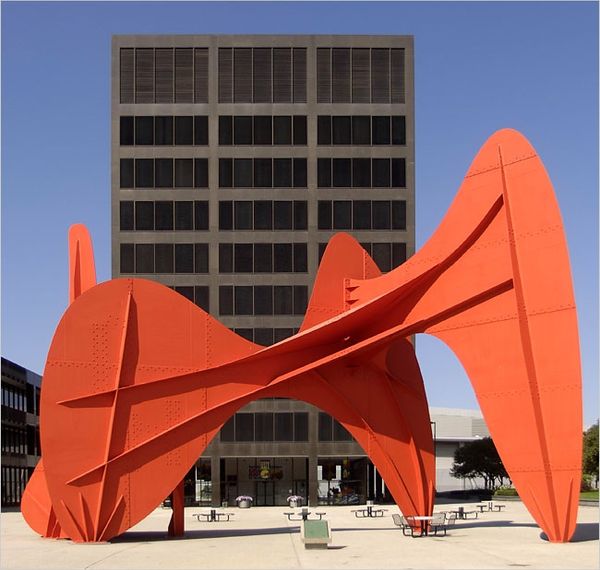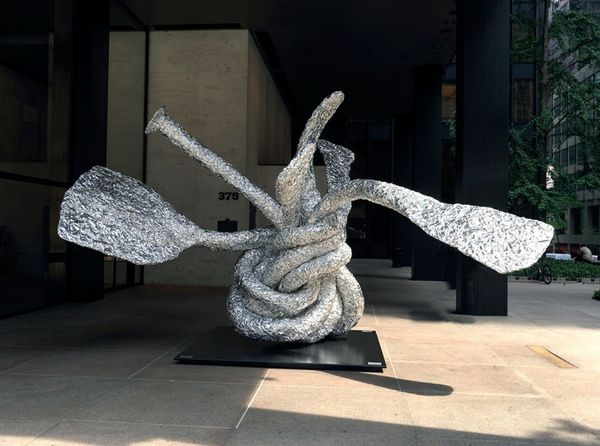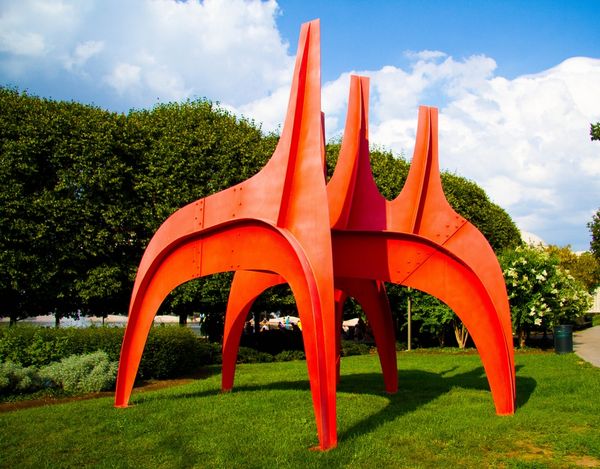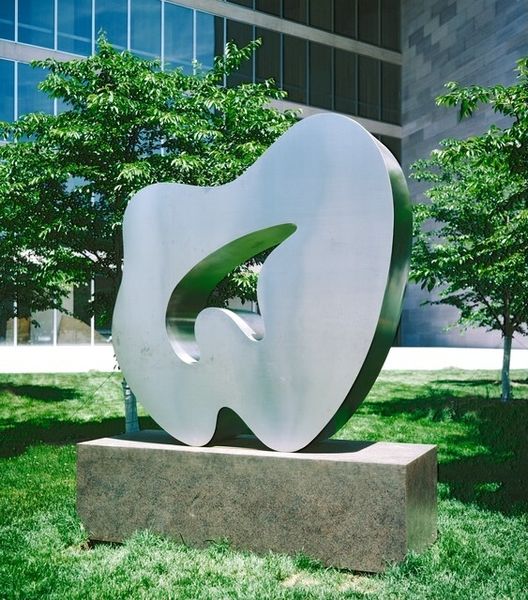
metal, public-art, sculpture
#
public art
#
abstract-expressionism
#
metal
#
futuristic
#
sculpture
#
public-art
#
sculpture
#
geometric-abstraction
#
modernism
Copyright: Alexander Calder,Fair Use
Curator: This is Alexander Calder’s “Two Discs,” created in 1965. The artist used metal to shape it into a very geometrical design, somehow it looks futuristic and old at the same time! What are your initial thoughts? Editor: This sculpture really makes me think about the labor involved. It’s clearly crafted from heavy metal, probably steel. The fabrication itself must have required significant industrial processes and skilled labor, challenging the idea of the artist as a solitary genius. Curator: Exactly! We should consider not just Calder's artistic vision, but the means of its production. Where was this fabricated? Who were the metalworkers involved? How did the socio-economic context of the 1960s impact the availability and cost of these materials and labor? Editor: Good point. Also, given that it is outdoors as "public art", how does the sculpture's interaction with the public space affect its meaning and reception? Is it about democratizing art, or is there a top-down approach, considering how public art is funded and chosen? Curator: Precisely. And the sleek, modern design; how might that relate to the Cold War era's emphasis on industrial progress and technological advancement? Could it be perceived as a celebration of mass production, or perhaps even a commentary on its potential alienation? Editor: That is something to consider! So, rather than simply admiring Calder's artistry, we can investigate the piece as a product of specific industrial practices and economic conditions, right? Curator: Absolutely. Analyzing the art's material and means of production can reveal a whole host of societal messages. It reframes it, not just as an aesthetic object, but as a historical artifact loaded with social and economic implications.
Comments
No comments
Be the first to comment and join the conversation on the ultimate creative platform.
